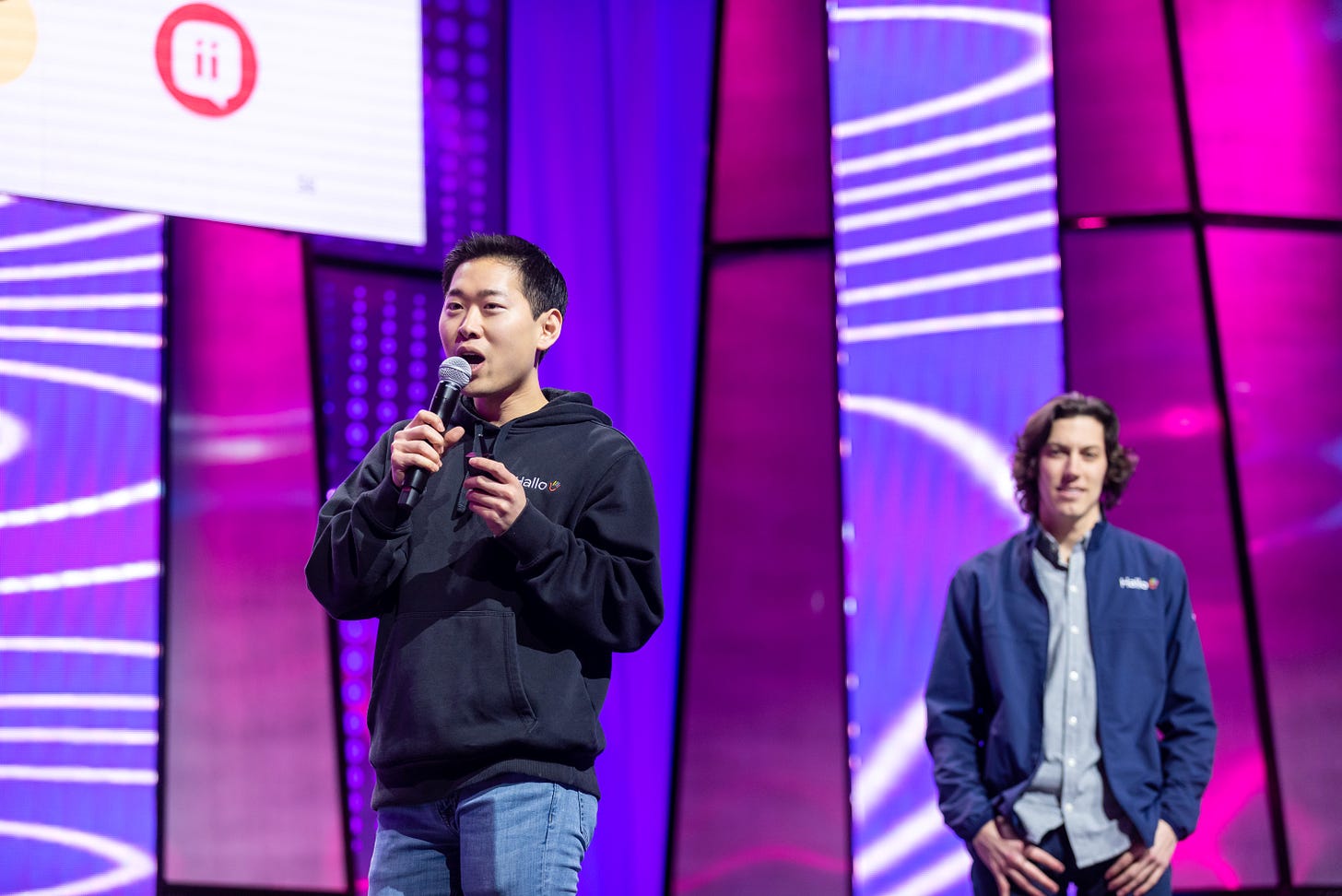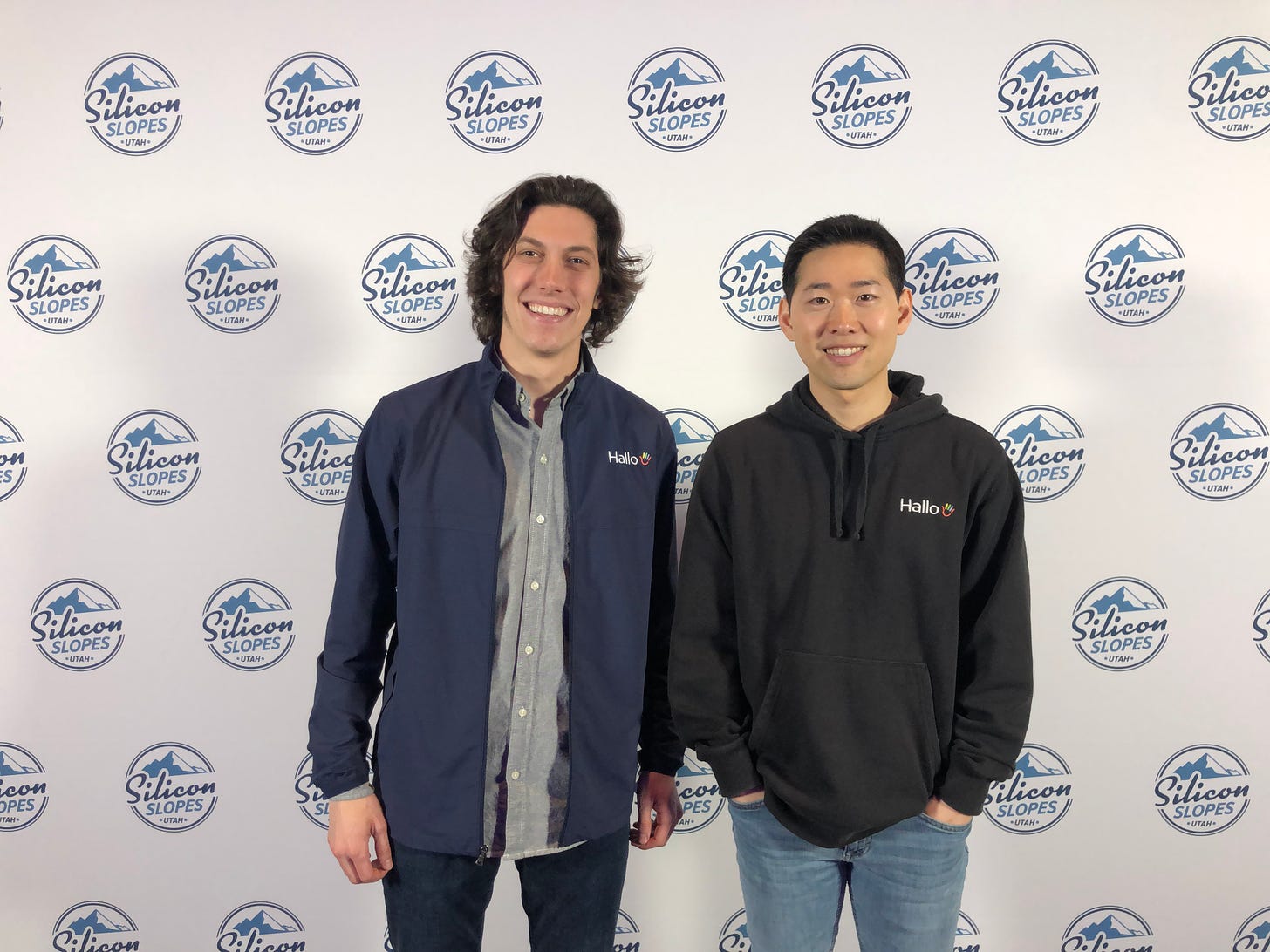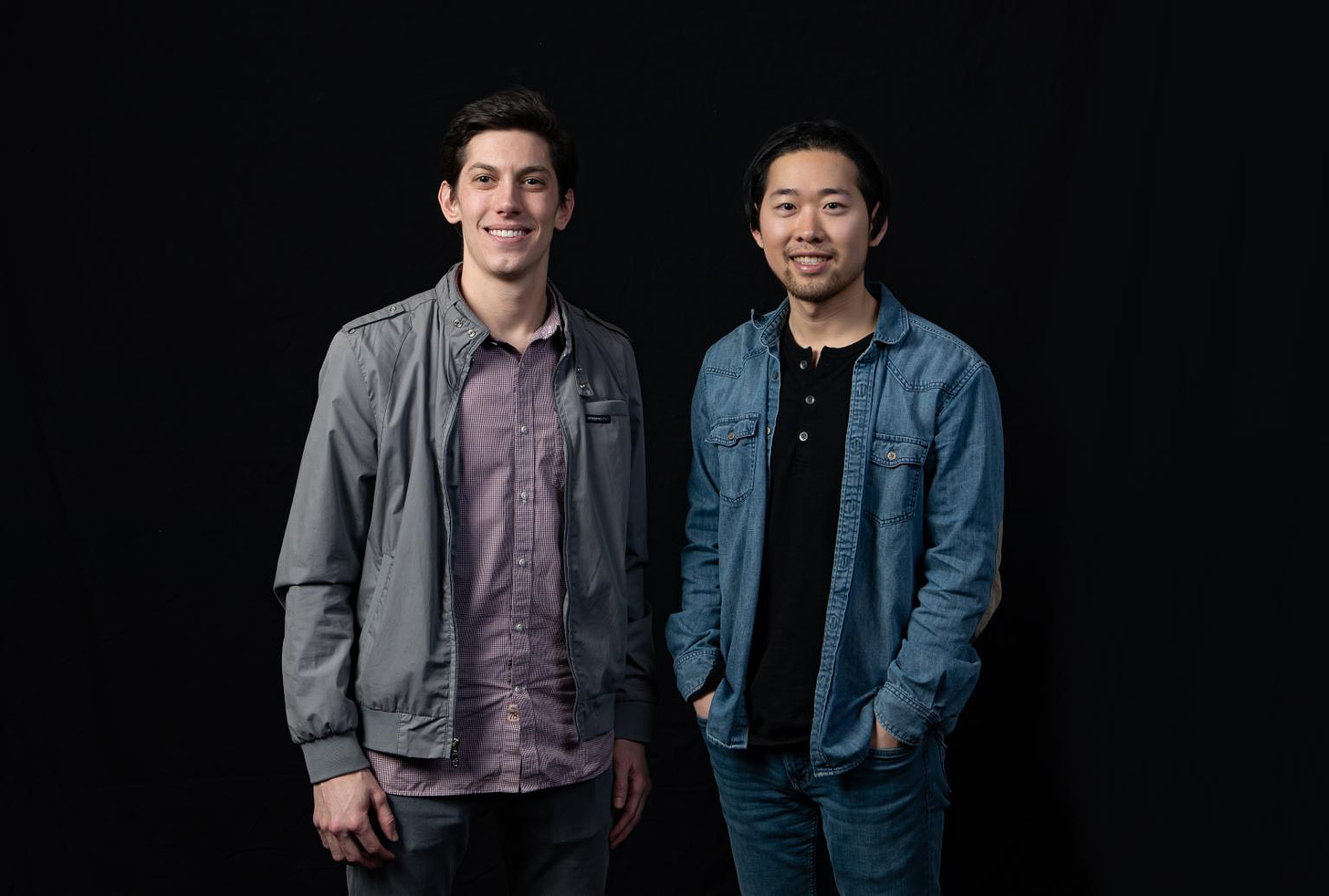Case Study: Hallo Cofounders Benjamin Dent and Joon Beh On How They Used Facebook To Turbocharge User Growth By 50X For Free
Communities are a powerful way to grow your user base. Learn from Dent and Beh how they used Facebook to grow Hallo without spending a dime.
Author’s Note: I strongly recommend reading the Founder Files (especially Benjamin’s!). These two put a lot of effort into theirs.
Executive Summary:
The Problem - Creating A Positive, Secure Learning Environment For Users
To get the most out of a community for your product or service, one has to make it safe and welcoming for its users. Benjamin Dent and Joon Beh recognized this problem and worked hand-in-hand with their users in crafting a solution that turbocharged Hallo’s growth.
Action Item: Be proactive in bringing your users along in crafting a solution.
The Solution - Rapidly Integrate User Feedback With Conviction
Dent and Beh did a great job of keeping their ears to the ground when iterating through solutions to make a healthy community for Halloers to learn English. Staying close to what your users are saying allows you to iterate on the right things faster.
Action Item: The quicker you can aggregate feedback from your user base, the faster you act with more conviction.The Takeaway - Build User “Buy-In” Through Incentives
Dent’s and Beh’s way of mitigating the caveats of Hallo’s eventual solution was clever by introducing gamification to prevent misuse of key user features. Their thoughtfulness allowed them to turn what could have been negatives until positives that strengthen user engagement as a whole.
Action Item: Something that may first appear as a negative can be leveraged towards positive ends if you leverage your creativity.
Founder Files:
The Five Phases of Influence: Winning Customers
Fundraising During COVID-19
Hallo cofounders Benjamin Dent (left) and Joon Beh (right).
Founder Emails: Ben Dent - ben@hallo.tv, Joon Beh - joon@hallo.tv
The Problem: Creating A Positive, Secure Learning Environment For Users
What was the main problem in building a language learning community to help grow Hallo's active user base?
Making a community where people feel safe, welcomed, and excited to learn English and connect with others is our #1 goal. As one probably can assume, online communities have their unique challenges, especially in terms of safety. Similar to how we run our Facebook community, we implemented a content moderation strategy on Hallo to flag inappropriate content and spam activity. To do so, we asked 100 of our most loyal users to be Hallo moderators. Surprisingly, this has been quite effective. There are products out there like thehive.ai, but they can be costly, especially in the early stage of a startup approaching product-market fit and focusing on a freemium experience. Soon, we look forward to using the latest technological advancements like hive to make our community safe.
Another problem we experienced was matching people based on skill level and providing a curriculum for them to learn from. These are things we are still testing and learning about as we test new features and collect data. We are excited about what we have on the product road map to make Hallo the best app to learn a language and experience that language's cultures through human interaction.
Describe the nature of the problem. What are the critical constraints?
As you can imagine, you need specific rules and processes to build a safe community where people can practice speaking on video calls and live streams with no concerns. With our small team, we couldn't monitor every activity on our platform as our community kept growing, so we had to find efficient ways to rely on our technology and community. In general, the best thing we ever did was tap into our loyal audience and loving group to help us in these initiatives. They were willing to do anything to help Hallo get to the next level as they see and feel Hallo's vision and potential.
What was your initial thought process in solving the problem?
1) Identifying the problem early on.
Qualitative (observations and interactions among community members, personal interviews with target audience) and quantitative research (Facebook polls, app polls, surveys to gather data on product positioning and identifying problem(s) to be solved, feature suggestions. common themes, etc.)
2) Identify product and technology requirements to execute on the plan
Based on the data we collected, we assessed various options. We asked our network, crawled the internet and became subject matter experts on various topics including video/live streaming APIs and SDKs. We also learned about open source mobile application frameworks (react native, flutter), building native apps, cost requirements at scale. All of this was needed for architecting a worldwide app that would need to be optimized for dated technologies (old phones), and effective learning methodologies for the app experience in learning a language.
With the last point, we created a detailed competitor and market analysis to help us understand our product positioning as reinforced by common themes from our users. This serves as a compass to point us in the right direction and re-evaluate when necessary and make iterations and pivots. Staying up to date is critical. The founders, especially the CEO, drive this strategy to ensure uniqueness and viability.
3) Brainstorming different ways to solve the problem.
The best strategy here is to be customer-obsessed. We found that by observing and listening, we can understand the unique strengths and challenges we face at a deep level. Asking the right question is critical as well, as asking the wrong question can lead you down a path resulting in lost time and resources. This is one of the most difficult tasks for founders and companies: Identify the right question.
Often, innovation is more about connecting disparate solutions attempting to solve the same problem and adding additional value to make it 10x better (aka future proof). That is a real disruption. The product we have today at Hallo results from understanding the ins and outs of the problem and the solutions that exist. We are combining social, entertainment, and education to create a compelling experience on Hallo— one that is difficult to replicate, and that creates a network effect.
This article providers an excellent framework for developing game-changing strategies centered around creativity. The frame focus on four areas: 1) contrast, combination, constraint, and context.
4) Analyzing the options with both pros and cons.
Building on previous steps, this step gets more granular to make sure we understand what we are evaluating. The right answer is the one that fits your situation the best and addresses your needs. Frequently, people confuse this process by thinking they are at a different stage than they are at. For example, the way Airbnb approaches a strategic initiative will probably be most different than a startup or early-stage company; however, some many parallels and lessons can be applied to both stages.
5) Making decisions and implemented systems quickly with confidence.
Acting with confidence and urgency is critical at this stage. By being quick and agile, you will be able to test and learn more. As a startup, the odds are against you, so go full send.

The Solution: Rapidly Integrate User Feedback With Conviction
How did you evaluate your initial solution(s) before trying to implement them?
One of the things we did well at as a startup was to deeply understand the problem we are trying to solve and test different ways before building a single feature. We spoke with over 1000 of our FB community members in 2018 to dive deep into the problem and solution they wished to see. We had spent one year building a strong community on Facebook with hundreds of thousands of followers, which gave us the confidence to decide quickly what features would work well for Hallo and what additional features we would need based on our product.
When you were working to implement them, what else did you discover that either confirmed you were on the right track or opened your eyes to a new facet of the problem?
As we started to build the Hallo app, the feedback we received from our users in the community we were building was powerful. It was clear that we were building something special. As time moved on, we were introduced to new facts about the problem. The first one was what kind of person would be successful in teaching English on Hallo. To test this, we opened streaming to the public. If someone was interested, they could apply, and based on a few screener questions, we accepted them. The three personas we hypothesized that would perform well on Hallo were 1) influencers on social media that teach English 2) professional/academic English teachers and 3) native speakers that have the "streaming personality". To date, we are continually observing and evaluating this effort and gathering valuable feedback, especially as it relates to the next facet of the problem: structured learning
In assessing structured learning, we continually ask our teachers and users (and ourselves) what features and curriculum, when paired together, will create a sticky experience. There are great apps out there that help you learn a new language at the beginner level, but as you move further down the language learning journey, few apps are effective at helping you speak and become fluent. The purpose of Hallo is to make speaking and becoming fluent, easy, and fun. As you can probably tell, we do this by creating a hybrid social + education platform. Instead of people going to YouTube for content and then facebook WhatsApp to find someone to practice with, our goal is to capture this "complete experience" on the Hallo app. What excites us is when our users tell us they deleted FB and Whatsapp because they find Hallo better and more meaningful.
The last point that is worth discussing pertains to network effects. Everyone dreams of creating one to help their company grow by word of mouth at scale. When we used Facebook groups in Hallo's early days before we had our app, the group grew exponentially. Today, we have over 1.2 million members in our groups. Today, we now have the Hallo app with 750k users, finding, on average 15k new users a week (organically). In short, we have seen the early signs of a network effect forming as we build more value-driven features on the platform.
When did you realize that you arrived at the right solution?
When we started to notice our daily and monthly active users increase, coupled with 35 min average sessions and backed by an extremely positive customer sentiment, we knew we were on the right path. Another critical aspect points to our community. If you take a close look at our community, many of our dedicated users are female. While gender norms and cultural values (outside of gender) give meaning to this, what is more, important is that our community is seen as safe and welcoming. Hurtful comments, sexual harassment, and inappropriate posts can plague social platforms. When we started seeing female users feel comfortable using our product, we realized that we arrived at the right solution. We are excited to make it even better as we continue to grow. Safety and inclusivity is our top priority.

The Takeaway: Build User “Buy-In” Through Incentives
Did that solution come with its caveats or tradeoffs? If so, what are they?
We had to limit some of our main features such as photo sharing, video calls, and live streams for new users, which affected user engagement in the beginning. Still, as we introduced gamification through which users could unlock those features as they level up on Hallo, we were able to improve the engagement and create a safe environment for everyone at the same time. Essentially, our approach here is a "buy-in" strategy that weeds out people using our app for the wrong reasons.
What is your general advice for founders on how to face the challenges related to COVID-19's effect on the fundraising environment?
It's not the best time to raise funding right now, but it definitely can be done if that's the path you want to pursue. Here's some advice for founders looking to raising funding during COVID-19:
Adjust your budget and get rid of unnecessary expenses.
Ask yourself if you still need to raise funding because raising capital is more expensive now.
Take advantage of virtual meetings. You can meet any investors anytime, anywhere.
Work the warm intros by networking with founders that got money from your target investors
Fundraising is when you have two full-time jobs. Don't lose your momentum.
Raise enough capital for a 24-month runway. You are now in survival mode.
Once you get reasonable terms, don't get too greedy. Close the deal as soon as you can and start executing your plans.
Name three other people I should profile next for F2F.
Aaron Shoo, Founder of Blerp: Blerp is the search engine for sound bites integrated into your voice chats, messaging, and live streams.
Pedro Goes, Founder of InEvent: InEvent is an event analytics platform to drive more customer relationships and personalized event experiences.
Luke Mocke, Founder of Mentorli: Mentorli helps diverse talent land jobs through mentors
Previous F2F Q&A Articles:
Case Study: Behind The Fundraising And Founder Success with Instabug's Omar Gabr
Case Study: Paragon CTO Ishmael Samuel Reflects On How He Chose His Cofounder
Latest Forbes Articles:
Aisling Organics Provides Organic Makeup For Health-Conscious Consumers
This Founder Helps You Skip The Small Talk And Get Closer With Others
Evera, A Harvard Consumer Biotech Company, Brings Stem Cell Banking To You
Instabug, A Debugging Software Startup, Has Raised $5M From Accel To Shakeup Mobile App Development
In An Age Of Mass Unemployment, Fountain Facilitates Getting Americans Back To Work
If you enjoyed this article, feel free to check out my other work on LinkedIn and my personal website, frederickdaso.com. Follow me on Twitter @fredsoda, on Medium @fredsoda, and on Instagram @fred_soda.




